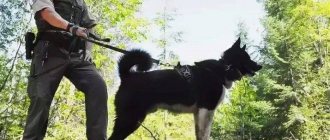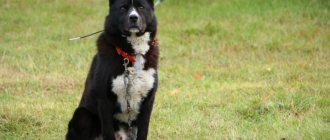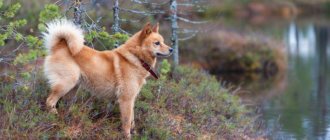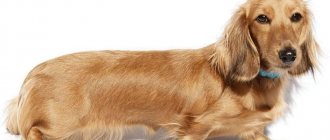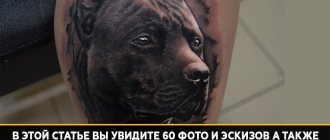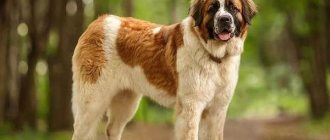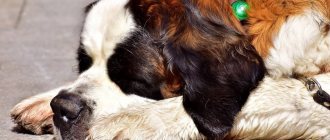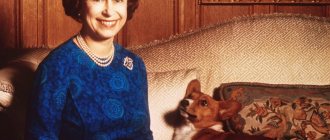One of the most popular dogs in its homeland of Finland, the Karelian Bear Laika is used to keep bears away from human-populated areas. However, this breed is rare in Russia and other countries.
This ancient breed, which likely originated in Northwestern Europe, is known for its intelligence, loyalty and courage, as well as its ability to assist in hunting large animals such as bears, wild boars and moose.
Maintenance, care
The thick fur of huskies allows the animals to feel great in low temperatures. It will not be difficult for them to settle down to sleep right in a snowdrift. But in hot climates, representatives of this breed are extremely uncomfortable. It is recommended that such a dog be kept outdoors rather than indoors.
Laikas are very active animals, and therefore they need to be walked for a long time every day and at the same time given physical activity.
When walking, it is best to choose an open space located as far as possible from the highway. If there are no such places, then the pet needs to be walked without letting it off the leash.
Representatives of this breed are distinguished by cleanliness, but frequent washing is contraindicated for them due to the thickness of the undercoat, which dries very poorly. To take care of the coat, the owner needs to comb his pet several times a week and use dry shampoos.
Feeding
After a husky puppy appears in the house, the owner’s first need is to provide the animal with daily nutrition. Here you can use both specialized (store-bought feed) and natural products. It is strictly forbidden to mix both of these options.
The growth and development of a dog depends on the diversity of its diet, especially in the early stages of life, when skeletal bones, muscles, etc. are being formed.
Worth knowing! Until six months of age, the puppy should eat 5 to 6 times; after the 6th month, reduce the number of meals to 3 to 4 times a day.
Adult animals should receive food twice a day, in the morning and evening hours
It is important to remember that the dog should always have a bowl of clean drinking water freely available to him.
The natural diet is represented by boiled or steamed food. The permitted products include the following:
- beef;
- pork;
- rabbit meat;
- bird;
- fish;
- milk products;
- occasionally raw eggs;
- vegetable crops.
There are some types of food that you should absolutely not give to huskies. This includes not only smoked, fried, salted and spicy foods, but also the following:
- pea grain;
- potato;
- wheat bread;
- sweets in any form;
- pasta.
A dog’s health and life expectancy depend on a high-quality diet. If you follow all feeding standards and properly care for your husky, it will live for about 10–15 years.
Upbringing
Before you bring the puppy home, you need to choose a place where he will sleep and eat, they must be strictly defined. A potential owner should remember that the puppy will go to the toilet after feeding and after waking up. To avoid further problems, the puppy must be taken outside on time, where he will relieve his natural needs. The main thing in this matter is perseverance and perseverance, only then the pet will begin to understand what it must do. By the age of two months, a husky puppy should have a clear idea of where its place is, where feeding occurs, obey the command “come to me” and have the correct reaction to the sound of a whistle, which will replace the voice command during the hunt.
Continuation of the reinforcement of this command and the call signs of the whistle must be reinforced after the puppy turns three months old during full walks. At this point, it is necessary to begin training the main commands. By 4 months of age, properly trained young dogs are mostly effortless and can do all of the above.
To stimulate obedience, it is important not to forget to praise the dog and give it its favorite treat, which the husky will appreciate. When raising a puppy, the owner must show persistence and firmness, but there should not be excessive cruelty
You need to know all the inclinations and characteristics of your pet in order to use them to develop the necessary skills in the animal. If there are harmful tendencies, then they must be nipped in the bud, otherwise they will later become habits that will be very difficult to get rid of. Laying the foundations of education for this breed occurs before the age of one year.
When raising a puppy, the owner must show persistence and firmness, but there should not be excessive cruelty. You need to know all the inclinations and characteristics of your pet in order to use them to develop the necessary skills in the animal. If there are harmful tendencies, then they must be nipped in the bud, otherwise they will later become habits that will be very difficult to get rid of. The laying of the foundations of education for this breed continues until the age of one.
Nutrition
The breed is not characterized by a very large appetite. Taking into account their large dimensions, it is worth noting that dogs do not eat that much. At the same time, the same laws are observed in relation to them as in relation to other breeds.
For example, Karelian Bear Dog puppies eat up to 5 times a day from 2 to 4 months. Gradually, the number of feedings decreases and by 12 months the dog has enough of two servings per day.
The menu is standard: animal proteins are the basis, with complex carbohydrates, fiber, and fermented milk products as a supplement. Porridges such as rice, buckwheat, can be added to meat broths.
The preferred meat is beef, and the most preferable poultry is chicken and hypoallergenic turkey. Sea fish is allowed once a week. Vegetables and fruits should be seasonal, and dried fruits can be an alternative. However, they should be dosed and served as a special treat.
Potatoes, chocolate, spices, and foods with flavor enhancers such as sausages are considered poison for dogs. It is not allowed to feed your pet food from the owner's table. Vitamin supplements should be added to natural foods. These simple rules will prolong your pet's life, making it rich and happy.
The Karelian Bear Dog is physically strong and of medium size.
Care and maintenance
Karelka can be kept outside the city, but not in an enclosure, and in a city apartment. The dog has high adaptive abilities and tolerates any conditions well
If we are talking about urban housing, then it is worth paying attention to the fact that it is necessary to walk the dog for a long time, physically straining it
The coat is quite capricious and requires daily care in the form of combing. The dog sheds in spring and autumn, so during this period, in addition to combs, you need to stock up on mittens and from time to time wipe the skin with a wet mitten, as if collecting the hair that is coming out.
If dandruff appears, it means that the dog suffers from food allergies or its diet is not very balanced. It is not necessary to bathe your husky more than twice a year, but the exception is exhibitions, competitions and severe dirt outside the window.
Puppies must be treated for worms and vaccinated against distemper, rabies and other ailments common to pets. Indoors, it is better to immediately determine your own corner for the dog so that it does not occupy the owner’s beds, armchairs and sofas. Nails can be trimmed in winter. In summer they wear well on the asphalt.
The dog's ears are treated from time to time with a solution of boric alcohol - it has a disinfecting effect. It is enough to wipe the eyes with a swab dipped in warm, damp water. This will be a prevention against ophthalmological problems to which your pet is so prone.
Possible diseases
Reviews from owners of the Karelian Bear Dog breed indicate that the four-legged pet is incredibly healthy. Experts say that during the entire existence of these dogs, not a single case of inherited disease has been recorded.
And if the dog is properly cared for, it can live 14-15 years. Care includes high-quality long walks with increased activity, a complete and balanced diet, timely vaccinations, and preventive visits to the veterinarian approximately once every six months.
However, there is a fly in the ointment regarding health - these are parasites, in particular fleas. The thick coat of dogs serves as fertile ground for them. For preventive purposes, it is worth regularly inspecting and treating the wool. Increased attention should be paid in the spring and generally during the warm season, when parasite activity is at its peak.
Karelian Bear Dog puppies
In addition, it is not recommended to overfeed your four-legged pet. Otherwise, he will gain excess body weight, which will make him passive and painful.
Care and maintenance
It is impossible to say about the Laika that she is a typical “room” dog. Yes, the animal will feel good in a multi-story building, that is, in an apartment. But, it will be more comfortable for him to live in a private area with a large yard.
Advice! Never limit the freedom of a purebred dog by putting him on a chain. Otherwise, he will become unhappy and degrade.
The Karelo-Finnish Laika is unpretentious in terms of amenities. But, we still recommend equipping her “home”. Every pet dog should have a collar
Never tighten it too tight! It is important to choose the right collar. It shouldn't have thorns
Let the dog get used to it from childhood.
Further. For her, you should purchase a soft lounger, preferably at least 1 meter in length and width. This is required, firstly, for discipline, and secondly, for the comfort of the animal. There should always be a bowl of water next to the lounger.
The dog should eat in the kitchen. This disciplines him and makes him feel like part of the family. Buy a bowl holder for your pet (preferably one that can be raised and lowered manually). Laikas grow quickly, so it is not convenient for them to eat while bending towards the floor. The permissible tilt of the neck during a dog’s meal is 10 cm.
Best articles: Manx cats
At home, an active dog will probably want to play. But household members do not always have time, therefore, the animal must be able to organize its own leisure time. He should be helped with this. Buying soft balls and toys for dogs is the best solution.
Important! Show your dog the toy you are giving him and allow him to take it in his teeth. If he likes the item, he will take it to the lounger, thereby declaring rights to it
You will have to take your Karelian-Finnish Laika for walks often. She loves being outdoors, bringing joy to others, interacting with other four-legged animals, and chasing birds. However, the owner of such a pet should not forget about his hunting abilities. While walking, he may break off the leash and chase the cat. A competent educational strategy, which we will discuss below, will help to avoid this.
The main care attention should be paid to the dog's fluffy fur. It's very nice to brush it
It is dense and easy to comb through with a comb. By the way, in order for the animal to always have a well-groomed appearance, it should be combed daily. Dogs love this procedure. Huskies molt several times a year. To speed up the process of renewing their coat, we suggest following these instructions:
- When you notice your dog's fur is falling out, moisturize it. It is necessary to spray water all over his body.
- Take a dog comb or a regular comb. “Walk” over the dog’s entire body, combing it well.
- Use a damp hand to remove any remaining fur.
If you notice that the CFL's fur has stopped shining, it is likely that she lacks vitamins. Consult your veterinarian and select the appropriate medication. Your pet may also need to change its diet.
Always make sure to keep your dog's ears and teeth clean. Use brushes, cotton wool and tea to care for them. It would also be a good idea to wipe the animal’s eyes to prevent souring. Since the Karelian-Finnish husky is a very clean animal, there is no point in bathing it often. 1-2 times a year is enough, preferably in the summer.
Pet care
Usually Karelian bear huskies are easy to care for and completely unpretentious to living conditions. However, some points should still be studied before you bring such a pet into your home.
Features of living in an apartment
The Karelian Bear Dog is not suitable for keeping in a city apartment
This breed is absolutely not suitable for apartment living as it requires mental stimulation and physical activity. In a confined space, energy will not be able to find a way out and the dog’s behavior can become dangerous for the environment.
A house with a spacious yard (necessarily surrounded by a fence) or a farm where the animal can realize its potential as a hunter is suitable for the Karelian Bear Dog. Build an enclosure for your pet, insulate it from the inside and arrange a sleeping place in the corner. And remember that every walk in a public place should be carried out exclusively with a muzzle and on a secure leash.
Video: example of keeping a dog
Pet hygiene
The main task in care is to comb your pet in a timely manner with a slicker brush.
Caring for the fur of a Karelian Bear Dog is not difficult, but it requires regularity. The dense undercoat requires careful care, which consists of combing it with a slicker brush (a special brush with metal teeth). The optimal frequency of the procedure is once every 2–3 days.
Important! The molting period occurs at the beginning of spring and causes a lot of trouble for owners. During this time, try to brush your dog daily.
The rest of caring for your pet comes down to the following actions:
- The Karelian Bear Dog does not have the characteristic dog smell, so bathing is optional. Wash your pet as needed.
- The dense coat easily collects ticks, splinters, twigs, thorns and other debris. Therefore, after each walk you should inspect the four-legged body for the presence of foreign objects.
- The eyes and ears are wiped with a damp cotton pad as accumulations form.
- Claws need to be trimmed if you cannot provide your pet with long active runs. The optimal frequency of the procedure is once every 3 months. Use a special guillotine nail clipper. To avoid touching the pulp (the inner part of the claw), step back 2 mm from its edge and cut at an angle of 45°.
- Once every 3 months, treatment for worms should be carried out. It is recommended that you consult a veterinarian regarding the drug and its dosage for your pet.
- Karelian Bear Dogs are not susceptible to tooth decay or plaque, so brushing their teeth is not necessary.
Principles of proper nutrition
The Karelian Bear Dog digests both natural food and dry food well.
The active temperament of the Karelian Bear Dog requires a balanced and quickly digestible diet with a predominance of high-calorie foods . A strong digestive tract, excellent health and the absence of allergies allows you to keep your four-legged dog on both ready-made food and natural products.
It is important that 50% of the diet consists of meat (veal, poultry, rabbit), the rest is vegetables, fruits and cereals. This way you will be able to saturate your diet with proteins, vitamins and essential microelements. Also, offal (liver, ventricles, tripe, heart) and cottage cheese are very useful for the Karelian bear dog.
You should not give your pet:
- sweets;
- chocolate;
- pork;
- flour and yeast products;
- canned food;
- pickled products;
- smoked meats, sausages and tubular bones.
If you are a fan of ready-made food, give preference to super-premium products, since these dogs need a reliable source of energy and vitamins. Cheap formulas can only harm your pet, so saving is inappropriate here. Select food according to the weight and age of the four-legged animal. Today, such manufacturers as ROYAL CANIN, Hills, ACANA enjoy a good reputation.
Up to 4 months, puppies are fed 3 times a day, then the frequency is reduced to 2 times. Also remember that the dog must have access to clean drinking water.
The course of pregnancy and childbirth
The birth of puppies is a crucial period when the owner must help the pet
The gestation period of the Karelian bear husky is 60–71 days, and there are 4–8 puppies in a litter. At this time, the bitch needs special care, which consists of the following:
- The dog's food should be fractional, i.e. food should be given 3-4 times, but in smaller portions. Starting from week 3, you need to increase the amount of foods containing calcium, proteins, phosphorus and magnesium by 10%. These components are found in poultry, soft bones, milk, cottage cheese, meal and vegetables.
- The intake of carbohydrates into the body of a pregnant bitch should be reduced, i.e. exclude pasta, bread, potatoes, etc. from her diet. Such food leads to weight gain, which complicates the whelping process.
- It is recommended to add B vitamins to the diet, as well as A, D, E (consultation with a veterinarian will help you correctly determine the source and dosage of the components).
- The dog needs to move. Experts consider it permissible to take her hunting in the first half of pregnancy. Then you should provide long walks in the air, but reduce their intensity.
External signs of pregnancy in a pet appear in the second half of the term (about 5 weeks). The owner will notice swollen mammary glands, enlarged peritoneum, and increased sensitivity of the nipples. In the last week of pregnancy, it is necessary to arrange a place where the bitch will be after whelping. This could be an old playpen or a spacious box (about 100x120 cm). If the dog lives in an enclosure, be sure to build a place inside the home where you will keep the pet for the first time after giving birth.
Cover the bottom of the box with clean rags or natural fabric in several layers so that it is not cold. Puppies should not be overcooled. You also need to think about heating. An infrared lamp, an oil heater or a simple electric heating pad are suitable for this. If you choose the latter, be sure to place it in the nest itself, but not under the branch. After giving birth, she may experience uterine bleeding. Maintain the temperature at 27–28°C for the first 2 weeks, then gradually reduce it to 20°C.
Important! Avoid drafts in the area provided for the dog.
An approaching birth is indicated by a decrease in the bitch's body temperature to 37°C, as well as restless behavior. She may whine, follow you, scratch the floor, or lie on her side. This period lasts on average 16–24 hours, at the end of which contractions occur and the puppies are born.
Stock up on the following essentials: green stuff for treating the umbilical cord, clean linen or cotton diapers (it is advisable to sterilize them with an iron), a bowl for placenta, a terry towel, scissors, and thread.
The owner must be close to the animal, calm it down and be ready to provide the following assistance to the pet:
- Walk your dog during the very first stage of contractions, as she needs to empty her bladder and bowels for normal labor.
- When the pushing begins (the intervals between contractions are reduced to 10-15 minutes) and the puppies begin to appear, you should help the dog. Take the first baby, tear the membranes and wipe the body with a diaper.
- At a distance of 2–3 cm from the tummy, tie the umbilical cord with a thread and cut it with scissors. Gently coat the edge with green paint.
- If the emerging baby is not breathing, rub it with a towel.
- After all the manipulations, immediately place the puppy next to the bitch so that he begins to suck colostrum, thereby stimulating the dog’s labor.
- Babies may appear at intervals of 30–60 minutes. However, be vigilant, if this time exceeds 2 hours, immediately take the dog to the veterinarian to avoid death.
- Carry out similar manipulations with each newborn puppy. Finally, count the number of afterbirths released and compare with the number of cubs. If the numbers do not match, contact your doctor immediately, as there may be a frozen fetus inside.
Character traits of Karelians
Karelian huskies are by nature fearless, very brave, tenacious and even stubborn animals, hardy and unpretentious. Since the main task in their breeding was hunting, it is the hunting instincts that are the priority. Going with such a pet to the game, the owner will not return empty-handed. Having driven the prey, the dog will hold it as long as necessary, patiently waiting for the moment until the hunter arrives.
During the hunting process, close contact arises between the owner and the dog; they seem to merge into one whole. But this is only possible if only one Karelian participates in the chase. All pets of this breed are intolerant of each other. Therefore, in the corral of an animal, if several Karelian dogs are involved, serious conflicts can arise.
Laikas of this breed are distinguished by their distrust of strangers, so you should not tempt fate and come close to a Karelian, especially if the owner is far from him. But the dog loves his family members. He becomes very attached to his owner and family, and is endlessly faithful and devoted to them. He will generously give everyone love and tenderness. True, there will always be one authority for him - his master.
The dog will also not be able to establish relationships with other animals living in the house, since all pets will be regarded as prey. Breed relatives will also not get along in the same house; leadership traits and dominance will lead to serious conflicts.
To a greater extent, these dogs are purchased specifically for hunting, and not as a pet. If they are not busy and do not get enough physical activity, they can get sick, become aggressive, behave inappropriately, damage furniture and everything in the house.
In addition, the role of a watchman is also not suitable for a Karelian. In order for him to grow up to be a non-aggressive, well-mannered dog, he should be socialized, educated and trained from puppyhood.
Price
Before you buy a Karelian bear dog , you should get to know its parents, evaluate their working qualities, external characteristics, and character. It’s good if the puppy’s mom and dad have diplomas, as well as a long and high-quality pedigree. It's good if the dog is already vaccinated. This is usually practiced in nurseries.
There are enough nurseries of this breed in Russia, but the most famous, as you might guess, are located not far from Karelia - in the Leningrad region. The price of a Karelian bear dog in such establishments is about 80-100 thousand rubles.
You can buy your pet secondhand for half the price. However, this does not mean that the dog will be healthy. In addition, there is a high probability that the dog is not a purebred, but a mixed breed. However, this does not matter for those who get a pet companion.
Characteristic
According to the Finnish Laika standard, the dog is a hunting dog, mainly for small game, predators and some birds. By nature, the husky is passionate and independent; it can enthusiastically pursue prey for hours.
In Scandinavian countries - Norway, Finland, Switzerland - working qualities are tested for representatives of the breed. In the rest, they are limited to assessing the exterior.
FCI breed standard: No. 49
The Finnish Spitz is a dog of medium height and lean build, strong and muscular. The standard length of the body is equal to the height. The posture is proud, the movements are free - the transition from trot to gallop and back is natural. The dog is able to change the pace of movement sharply, accelerating and slowing down if necessary.
The energetic and courageous Karelian-Finnish Laika looks proportional. When viewed from above, her head resembles an oval, widening towards the ears. The ratio between the cranial and facial zones is 4:3. The lines of the muzzle and skull run parallel to each other. The frontal groove is weakly expressed, the stop is marked, but not protruding. The muzzle is narrow and dry, tapering noticeably toward the nose. The lobe is black, charcoal. The jaws and teeth, forming a scissor bite, are covered by thin but dense lips, brightly pigmented black. The dental formula is complete.
The cheekbones are weakly filled, only slightly pronounced. The eyes are almond-shaped, medium in size, set slantingly. The look is lively and attentive. The husky's ears are small, set vertically, high on the skull, directed forward. The shape of the ears is pointed, the thickness is medium.
The neck is muscular, without dewlap; in males it looks short due to the voluminous collar. The withers are clearly defined and flow into a short back with a muscular loin. The back ends with a medium-length croup, slightly sloping and well developed. On the rump there is a tail, curled into an energetic ring thrown over the back.
The sternum of the Finnish Husky is deep, with curved ribs, flowing into a tucked belly. The front legs are set parallel and straight, with strong shoulders and elastic wrists. Hindquarters - with wide hips and low hocks.
Disadvantages of the breed:
- weighted head, rough facial part;
- weak lower jaw;
- ears set at an angle;
- tail, undertwisted or twisted;
- sharp color transitions in color.
Serious defects leading to exclusion from breeding:
- soft rounded ear tips;
- broken tail;
- white “socks” on the paws or large spots on the chest;
- color in color, sharply different from the general shade;
- wavy coat;
- under/undershot;
- blue or amber eyes;
- nose of any color except black;
- aggression towards people.
Russian breeders distinguish the Karelian-Finnish variety from the Finnish Spitz by the following indicators:
- more stretched body;
- the shape of the head when viewed from above is triangular, not oval;
- flat skull;
- the stop is less pronounced;
- the ears are larger than those of the Finnish Spitz;
- the tail is curled into a tight ring, sometimes double;
- brown nose is acceptable;
- White spots in color are acceptable, fawn color is acceptable.
Best articles: Phanerozoic, or Phanerozoic eon (542 million years ago to the present)
Dimensions, weight and height of the breed
The height of the Karelian-Finnish husky is 47 cm for a male or 42 cm for a female. Deviations in both directions of 3 cm are allowed.
Ideal weight for the breed:
- 12-13 kg – males;
- 7-10 kg – females.
Possible colors
The Finnish husky's coat is of moderate length and lags behind the body due to the abundant undercoat. On the head and limbs it is shorter and fits more tightly to the skin. The guard hair is coarse, the undercoat is soft and downy.
Color – red. At the same time, the fur on the back is bright, golden-red, and on the ears, throat, sternum and belly it is lighter. A white mark on the chest is allowed.
Puppy weight by month
Karelo-Finnish huskies vary in size. One litter can contain puppies of different parameters. Each individual’s development is individual, but breeders offer tables of average puppy measurements for reference.
Weight-for-age ratios:
- 1 month – 1.2 kg;
- 4 months – 3.1 kg;
- 6 months – 5.1 kg;
- 8 months – 7.5 kg;
- 10 months – 10 kg;
- 12 months – 11 kg.
Lifespan
Finnish huskies are hardy dogs that can live up to 15 years with good care. Take your dog for a veterinary examination every year, feed it according to the diet and walk it according to the schedule. A grateful pet will delight you with excellent health until old age.
Allergenicity
The Karelian-Finnish husky does not emit a “dog” smell, but its fur, skin or sebaceous secretions can cause allergies. Before purchasing a Laika, check your body’s reaction to allergens and visit the Karelian breeder, asking to arrange close contact with the dogs for the whole day. If there is no reaction, feel free to buy a puppy.
Breed characteristics and character
The Karelian bear dog is a hunting dog. In ancient times, she went armed against large animals. Finland is considered the homeland of dogs, where these dogs are regarded as national pride.
After this Scandinavian country gained independence at the beginning of the 20th century, part of Karelia went to the Soviet Union. So the breed split into the Karelian bear and the Russian-European husky.
The history of the breed goes back several tens of thousands of years. Archaeologists note that dogs similar to the Karelian lived in Scandinavia even before the Vikings arrived there. Judging by the huge number of remains, they were quite popular. Often in burials you can find both an animal and a human skeleton.
There is such a trait in character as aggression. By the way, the animal is considered a particularly dangerous breed in Russia. The dog shows aggression towards everything that it considers its prey, as well as towards other dogs. Distrustful of strangers, the four-legged friend does not attack them, but behaves with restraint. With loved ones he is completely on friendly terms - affectionate and gentle.
Among huskies it is considered the best hunter. At the same time, it is distinguished by its unpretentiousness and endurance. The difficult temperament requires an experienced hand, so the dog is not suitable for beginners. Absolutely does not perceive shouts and swearing. You need to communicate respectfully, as equals.
The Karelian Bear Dog was bred to hunt bears.
The dog is prone to dominance and independence. There is no need to limit it. However, when walking in public places, it is better to keep the animal on a leash.
Rules and diet of feeding
Despite its increased activity, the Karelian Laika eats little compared to other breeds. She will eat as much as she needs, no more, no less. When choosing a diet, this must be taken into account, making the pet’s menu more nutritious. More calories will be needed during the cold season, as well as during the hunting season, when the dog expends more energy.
If the owner decides to opt for natural feeding, then the diet should be balanced so that 50% is meat, which is a source of protein. The remaining 50% includes:
- cereals that replenish energy balance;
- fruits and vegetables, which are the main source of minerals and vitamins;
- offal – liver, tripe, heart;
- fermented milk products - cottage cheese, sour cream, kefir, yogurt.
It is strictly forbidden to feed a Karelian from your table. In addition, you should not pamper your pet with baked goods, confectionery, smoked meats, chocolate, pickled and canned foods, pork, tubular bones, potatoes, etc.
Spices, especially salt, are also prohibited, as they contribute to a decrease in olfactory functions, which is completely undesirable for hunting dogs. Due to the abundance of spices in the diet, they lose their sense of smell and cannot perform their main function. You will also need to supplement your diet with vitamin and mineral complexes.
If the owner gives preference to industrial diets, then it is worth purchasing high-quality premium and super-premium food for active dogs. Dry food does not need to be soaked, but when “drying” it is recommended to provide your pet with a sufficient amount of drinking water.
You should feed your pet twice a day, preferably in the morning and evening hours. But puppies are fed at least 4 times a day. Otherwise, the diet for puppies and adults is practically no different, except for the predominance of fermented milk products in children.
Diseases of the Karelian Bear Dog
Karelian bear huskies are dogs with excellent health, which, with proper care, delight their owner with their company for 11–15 years. Experts do not identify genetic breed predispositions, but with a sedentary lifestyle and lack of opportunity to hunt, such dogs are prone to severe obesity. Excess weight is a direct threat to life, so if the owner notices a rounding of the contours of the animal’s body and a decrease in its activity, it is necessary to urgently consult a doctor.
Laikas also suffer from a problem that is typical of all active breeds—gastric volvulus. Heavy feeding before or immediately after vigorous activity can cause the organ to twist. Symptoms of this condition are nausea, vomiting, refusal of water and food, whining when touching the stomach. This is an extremely dangerous condition; if surgery is not performed within 2–3 hours, the animal will die.
Character and behavior
Laikas are smart and quite intelligent dogs, but not every owner can teach them certain skills on their own, because these animals are characterized by independence and touchiness. The husky has an excitable character, which interferes with the development of hunting skills and basic commands, but basically it is docile and soft.
Laikas have a developed sense of justice, so they often express dissatisfaction and resentment at people’s wrong actions. They perfectly detect reproach in the words of the owner, they can distinguish intonations, so dog handlers advise not to shout at dogs, so as not to develop aggressiveness in them. A calm reprimand has a stronger effect on the dog than shouting.
Dogs show particular aggressiveness when their owner is in danger - they will protect him even at the cost of their own life. Laikas are indifferent to strangers, because they are not objects of hunting.
Description of the Russian-European Laika
According to the IFF classification, the Russian-European Laika is included in the 5th group (“Spitz and primitive dog breeds”), the 2nd section (“Northern hunting dogs”), and is assigned No. 304. The latest edition of the standard dates back to 03/02/2011. When assessing individuals, additional working tests are carried out.
Appearance of the dog
The Russian-European Laika is a medium-sized dog, strong built, square in shape (the length of the body is equal to the height at the withers).
The standard makes the following requirements for the appearance of a dog:
- The head is wedge-shaped, the skull is wide with a noticeable occipital protuberance. The stop is not sharply expressed, but the protruding brow ridges create the impression of a sharp transition from the forehead to the muzzle.
- The nose is only black.
- The teeth are large and strong. Complete dental formula, scissor bite.
- The eyes are small, oval, slightly slanted. Brown or dark brown.
- The ears are erect, with pointed tips.
- The back is straight, the stomach is tucked.
- The tail is curved in a ring or sickle over the back or pressed to the thigh. Its length when straightened should reach the hock joints or be 2–3 cm shorter.
- Limbs straight, parallel. Paws are oval, with gathered toes.
- The coat is thick, hard, straight. The undercoat is abundant and soft. The fur on the shoulders and neck forms a collar, behind the cheekbones there are sideburns, and on the back of the hind legs there are pants without fringes. The fur between the toes is rough, like a brush.
- Colors: black and white;
- white with black;
- black;
- white.
- males - 52–58 cm;
Behavior and character of the Russian-European Laika
The character of the Russian-European Laika is very stable and balanced. Even during the rut, she does not get excited, but acts deliberately. This dog has a well-developed sense of smell, and the ability to find prey is built on an instinctive level; it is a born hunter.
In a family, she can show her independent and strong character, so such a dog is not suitable for people who have never raised independent pets. From the first days, the owner must put himself as a leader and in the future not deviate from this position, without giving the dog the slightest chance to suspect that things may be different. Therefore, only the owner should feed the pet and walk with it; such actions reinforce its leading position in the eyes of the dog.
Best articles: The smallest states in South America by area and population
Willfulness often manifests itself in the form of barking for no reason and attempts to escape. This is corrected not only by education, but also by proper care. So, the dog should be walked not only often, but also actively. She needs to run around as much as she can so that she can feel calm and relax at home.
A properly raised husky becomes attached to its owner. Her attitude towards the rest of the family can be described as neutral. She will never show aggression, but she will love only one person - with whom she goes hunting.
The main purpose of the Russian-European Laika is a hunting dog.
Purpose of the breed
The Russian-European Laika is used only as a hunting dog. She can chase prey for a long time, regardless of weather conditions. To drive, she uses barking and cunning; she can act alone or together with other dogs in the pack.
Since REL has an innate suspicion of strangers, dogs of this breed can be used as guards (they will give a voice), and with special training they can be trained to detain violators.
Disadvantages and disqualifying characteristics
Any deviation from the standard is considered a fault, which is graded according to the degree of manifestation and the dog's ability to perform the job.
So, the disadvantages include:
- prominent forehead;
- depigmentation of the nose and lips;
- overbite, small or damaged teeth;
- insufficient undercoat, lack of collar and sideburns;
- gray hair;
- specks on the head and limbs in the color of the main color;
- height is 2 cm above standard.
Serious deficiencies (defects) according to the standard include:
- deviations from the sexual type (females similar to males and vice versa);
- obesity or excessive thinness;
- head too long;
- a clearly expressed stop or, conversely, a smoothed one;
- lack of teeth;
- large ears or with rounded tips;
- paws turned inward or outward;
- feathering on the hind and/or forelimbs;
- spots on the head and legs are not the color of the main color.
Signs that serve as the basis for disqualification include:
- aggressiveness or cowardice;
- malocclusion;
- corneal clouding;
- eyes of different colors or with spots;
- short tail;
- short-haired or long-haired;
- any colors not specified in the standard.
History of the origin of the species
This breed is considered native for a reason. Dogs have lived near humans for thousands of years. Perhaps these animals are the closest relatives of domesticated wolves and jackals. The first evidence of the existence of Laikas is found on the territory of ancient Rus'. The oldest fresco depicting furry pets dates back to the 11th century.
These animals not only served the northern peoples, but also helped the Western European nobility in hunting. Rich people loved to go into the forests to hunt bears and wild boars; Laika coped with their baiting remarkably well. An interesting fact is that all representatives of this group are called Spitz abroad.
Selection and mixing of blood in the north was not particularly followed. Working qualities were distributed equally across all newly emerging breeds. The official description of these animals appeared only in the 19th century. Just at this time, work begins on classifying and improving the qualities of the breed. The participation of Prince Shirinsky-Shikhmatov and dog handlers: Poplavsky and Dmitrieva-Sulima is considered important.
There are 3 main types of Laikas: sledding, herding and hunting:
- The first group is considered the most numerous, in terms of the number of species included in it. This includes draft dogs, which are especially popular in the north.
- The second subspecies includes those Laikas who protect livestock from wolves and bears.
- Hunting dogs still perform their functions and are considered indispensable in northern European regions.
History of the Karelian Bear Dog
The Karelian bear dog's homeland is Finland, where its name sounds like “karjalankarhukoira”. Purposeful breeding began in 1936, but researchers believe that the ancestors of modern Karelian Laikas appeared in this territory long before its development. The goal of the breeding work was to create a strong animal that would react to large game with a loud bark - and this is how representatives of the breed, called bear dogs, appeared. Standard No. 48 appeared in 1945, when it was registered in the system of the International Canine Association. The 2015 edition of the document is currently in effect. Although representatives of the breed supposedly existed thousands of years ago, only 9 years passed from the moment the modern type of animal was bred until its official registration. This is a very popular pet in Finland, and it is used precisely for its intended purpose - for hunting.
Appearance of the Karelian-Finnish Laika
The Karelo-Finnish Laika is a medium-sized hunting breed, with fluffy “honey” fur and brown or black eyes. The dog has a dry, strong type of constitution, almost square in format. “Boys” are on average slightly larger and more massive than “girls.” The breed standard defines the following parameters: height at the withers – 42-50 cm (for males) and 38-46 cm (for females); body weight – 12-13 kg and 7-10 kg, respectively.
Head
The Karelian skull looks oval on top and slightly convex on the sides. The brow and occipital protuberance are not very pronounced, as is the frontal groove. The feet of representatives of this breed are clearly drawn, but not too sharply. The muzzle is narrow, with a flat back, and dry.
Jaws and teeth
The dog's jaws are massive, closed in a tight scissor bite. The teeth are strong, even, symmetrically set.
Eyes
Karelian-Finnish huskies have not very large, almond-shaped eyes, set somewhat obliquely. The iris of the eye is dark colored.
Ears
Ears are set high and erect. The ear flap is small, pointed in shape, the outer side is hidden under a layer of thick short hair.
Neck
The neck of the Karelian-Finnish Laika is of normal length, but due to the voluminous woolen “collar” it gives the impression of being short and thick.
Frame
The correct “Karelo-Finn” has a strong physique. The body of the dog is square in shape with a straight back, a massive, sloping croup and well-defined withers. The stomach is slightly tucked.
The legs of the Karelian-Finnish Laika are straight, set parallel to each other. The front legs are characterized by well-developed bones, mobile, slightly inclined shoulder blades and normal length pasterns. The hind legs of this breed are strong, with fleshy thighs, muscular shins and low set hocks. The dog's paws are round, almost cat-like, with the front ones slightly shorter than the back ones.
Tail
The length of the tail of the Karelian-Finnish husky is up to the hock joint. The section of the tail bordering the base is turned sharply towards the back, which is why the rest of it rushes down and hangs down to the hip.
Wool
On the head and the front of all four limbs the hair is relatively short. On the body, tail and hips the coat is longer, more luxuriant, noticeably lagging behind the body. The guard hair on the shoulder blades of male dogs is especially noticeable - it is hard and stands almost straight up.
Color
The backs of Karelian-Finnish huskies are more intensely colored and come in rich red or reddish-golden tones. The dog's cheekbones, insides of the ears, legs and tail, as well as the chest and underbelly are noticeably lighter. The presence of white spots on the paws and a light mark on the chest is considered normal.
Disadvantages and defects of the breed
The most typical defects of Karelian-Finnish huskies are a large head, a heavy muzzle, an underdeveloped lower jaw, and an excessively or insufficiently curled tail. Often among Karelians one can find such deviations from the standard as sharp transitions between shades of color, ears hanging to the sides, ears tilted back or tips directed towards each other, as well as soft pasterns. If we talk about disqualifying defects of the breed, then these include:
- blue and yellow colors of the iris;
- the tips of the ears are too soft;
- any deviations from the standard bite;
- wool with a wave or pronounced curl;
- large white markings on the chest and the same “socks” on the animal’s legs;
- depigmented lobe;
- unjustified aggression directed at a person.
